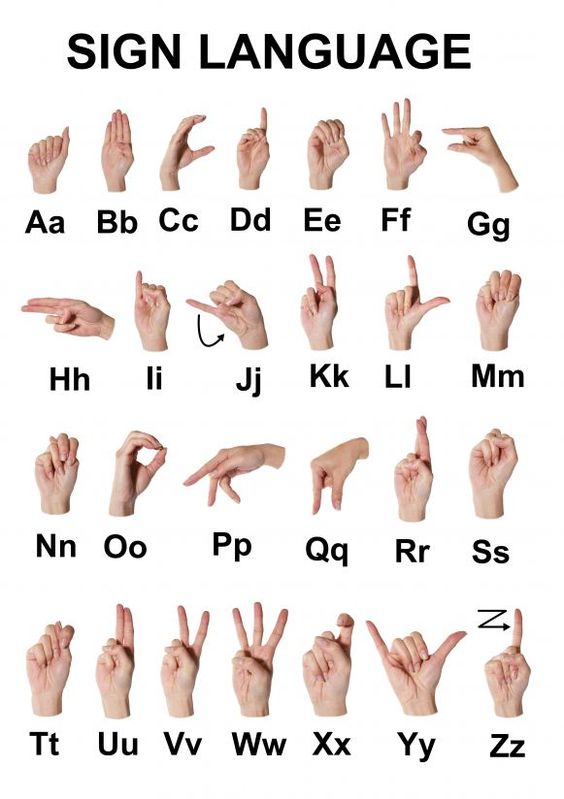Best Way to Learn Sign Language at Home
Learning sign language at home can be fun and rewarding. It opens up a new way to communicate with others.
SLearning sign language can open new doors for communication, inclusion, and connection. Whether you want to communicate with a deaf family member, work in an inclusive environment, or simply learn a new skill, mastering sign language from home is absolutely possible. The key lies in the right approach, commitment, and using the best tools available.
This guide will walk you through the most effective ways to learn sign language at home — in a practical, achievable, and engaging manner.

Credit: ddombuds.org
1. Choose the Right Type of Sign Language
Before you begin, it’s important to know that there are different types of sign language. Each country, and sometimes even regions within a country, have their own versions. Some examples:
- ASL (American Sign Language) – Common in the U.S. and parts of Canada.
- BSL (British Sign Language) – Used in the U.K.
- Auslan – Australian Sign Language.
- ISL (Indian Sign Language) – Used widely in India.
If you live in the U.S. or plan to interact with Americans, start with ASL. Make sure to research which version is most useful for your needs.
2. Start with the Alphabet and Basic Vocabulary
Learning the fingerspelling alphabet is a great first step. It allows you to spell out names and unfamiliar words. Then, move on to common words and phrases, such as:
- Greetings (hello, goodbye, please, thank you)
- Family terms (mother, father, sister, brother)
- Everyday needs (eat, drink, bathroom, help)
Focus on 5–10 new signs a day. Practice them often during the day to help them stick.
Tips:
- Write flashcards with pictures and the meaning.
- Say the word aloud while signing it.
- Teach a friend or family member to practice together.
3. Use High-Quality Online Resources
There are many websites, YouTube channels, and apps designed to teach sign language step-by-step.
Recommended Websites:
- Lifeprint.com (ASL University) – Offers free, detailed lessons and videos.
- Start ASL – Structured free and paid courses.
Recommended YouTube Channels:
- Bill Vicars (Lifeprint) – Clear lessons taught by a deaf professor.
- ASL Meredith – Focuses on conversational ASL skills.
Top Apps:
- The ASL App – Created by deaf people for learning on the go.
- SignSchool – Learn signs by category with interactive quizzes.
Choose one or two resources and stick with them instead of jumping around. Consistency is key.
4. Practice Every Single Day
Daily practice is essential to make sign language natural for you. Even just 15 minutes a day can make a big difference.
Daily Practice Ideas:
- Sign your morning routine (wash, eat, drink coffee).
- Fingerspell grocery items while shopping.
- Watch a short video in sign language and imitate the signs.
- Record yourself signing and review for improvements.
Building muscle memory through repetition will help you sign more fluidly over time.
5. Watch and Mimic Native Signers
Sign language is not just about the hands — facial expressions and body language matter a lot.
Watching native signers helps you:
- Understand natural pacing and flow.
- Pick up subtle facial expressions that change meaning.
- Learn cultural norms in the deaf community.
You can find free video libraries and conversations on YouTube or TikTok by searching for “Deaf creators” or “ASL vlog.”
Tip: Turn off captions sometimes to focus fully on the signing itself.
6. Join Online Communities and Practice
Interaction is essential for learning any language. You can find deaf and signing communities online where you can practice live.
Good Platforms:
- Facebook groups like “ASL Practice Group.”
- Reddit communities such as r/ASLlearners.
- Meetup.com – Virtual sign language meetups.
Even simple interactions can boost your confidence and help you think more quickly in sign language.
7. Take a Structured Online Course
If you prefer more discipline and guided progress, enroll in a full course.
Top choices:
- Gallaudet University ASL courses – Self-paced and high-quality.
- Udemy or Skillshare ASL courses – Affordable with lifetime access.
- SigningOnline.com – Accredited courses focusing on real-world signing.
Courses offer quizzes, feedback, and structured learning plans that self-studying sometimes lacks.
8. Label Items Around Your Home
Immersion is one of the best learning strategies. Label everyday objects with sticky notes showing the sign.
For example:
- Refrigerator
- Door
- Lamp
- Chair
Each time you touch or use the object, sign its name. This builds automatic association and strengthens recall.
9. Think in Sign Language
Once you reach a basic level, try thinking in sign language instead of English.
Start with:
- Simple thoughts like “I am hungry” or “I need water.”
- Signing while talking to yourself in the mirror.
Over time, it will help you become more fluent and natural.
10. Be Patient and Consistent
Learning a new language, especially one involving motor skills, takes time. Celebrate small wins.
- Master fingerspelling first.
- Build a strong vocabulary.
- Practice basic sentences.
- Gradually learn complex structures like classifiers and grammar rules.
Most importantly, stay consistent even on days you feel lazy. Small steps daily lead to big progress over months.
Quick Table: Best Free and Paid Resources
| Resource Type | Name | Description |
|---|---|---|
| Free Website | Lifeprint (ASL University) | Free lessons by a deaf professor |
| Free App | The ASL App | Learn conversational signs quickly |
| Paid Course | Gallaudet University | In-depth, university-level online courses |
| YouTube Channel | Bill Vicars’ Lifeprint | Clear and friendly video lessons |
| Online Community | Reddit r/ASLlearners | Forum for questions and practice partners |
Final Tips for Success
- Keep a learning journal to track signs you learn daily.
- Reward yourself weekly for meeting practice goals.
- Review old material often to avoid forgetting.
- Challenge yourself to sign short songs or stories.
Remember:
Learning sign language is not just about hands. It is about culture, emotions, and genuine connection. The more you immerse yourself, the faster you’ll grow.
Start today, sign daily, and stay committed — and soon, you will be opening conversations that once seemed impossible.
FAQs
How Can I Start Learning Sign Language At Home?
You can start by using free online courses, mobile apps, YouTube tutorials, and consistent daily practice. Pick a language variant (like ASL or BSL) and stick with it.
What Resources Are Best For Learning Sign Language?
Websites like Lifeprint, apps like The ASL App, and YouTube channels like ASL Nook and Bill Vicars offer excellent learning materials for beginners.
Are Sign Language Apps Effective For Beginners?
Yes, apps are highly effective. They provide interactive learning, video demonstrations, and quizzes that make learning convenient and engaging for beginners.
Can I Learn Sign Language By Myself?
Absolutely. With the right online resources, books, practice tools, and dedication, you can successfully teach yourself sign language at home.

